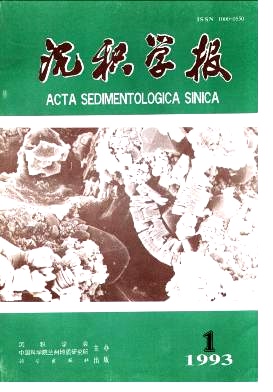CaCO3 and Sedimentary Environment of Loess Strata
- Received Date: 1990-02-21
- Publish Date: 1993-03-10
Abstract: CaC03 content. existing form and iUuvial depth in loess strata are studied in this paper. In order tomake clear the relation between CaC03 content and climate, the author firstly classify CaC03 into fivetypes and their relation with climate are discussed as follows. (1) High fragmental CaC03 content indi-cater weak leaching and arid climate, low content indicates intense leaching and humid climaie. (2) IlluvialCaC03 is secondary CaC03that formed by leaching and illuviating, and the content of secondary CaC03 ishigher than 5%. The illuvial GaC03 is riot realiable for reconstructing the climate, but generally, low con-tent represents humid climate and high content arid climate. However, dense accumulation of CaC03 mayindicates humid climate. (3) ,Contemporaneous remnant CaC03 is the residu al of leaching that occuredduring the development of soil, the content of CaC03 is less than 5% and the less the content is,the moreliumid the climate. (4) Deuterogenic residual CaC03 (with the content less than 5%)is the remant ofleaching that look place during the development of the overlying soil, the abandance of CaC03 is low andcan not reflect the climate of the soil strata growth. (S) Evaporated CaC03 was the precipitates that desertposited at the top layer of soil during the intensive evaporate process, and its content represented the desertclimate with a mean annual rainfall less than 100mm. Loess and palaeosoil containing thin film and. stain but not concretions was developed under the climate。with mean annual rainfall less than 450mm, (continued on page 54)
| Citation: | Zhao Jingbo. CaCO3 and Sedimentary Environment of Loess Strata[J]. Acta Sedimentologica Sinica, 1993, 11(1): 136-146. |






 DownLoad:
DownLoad: